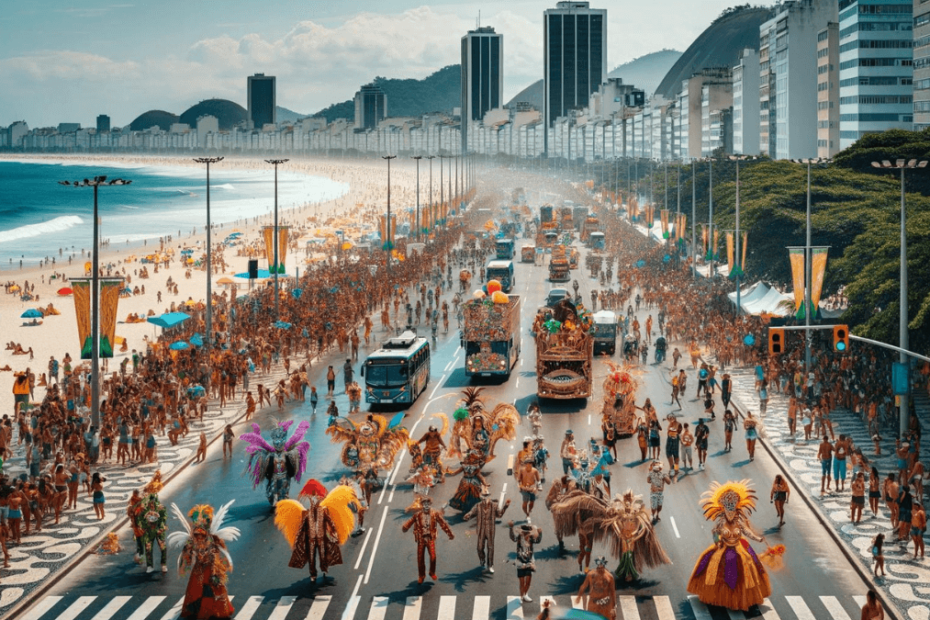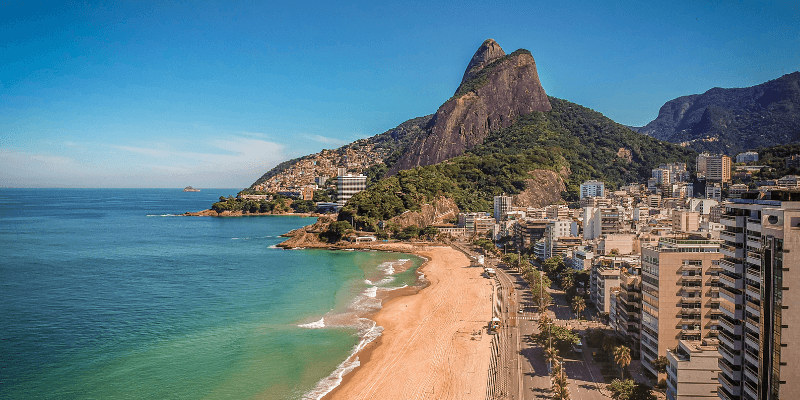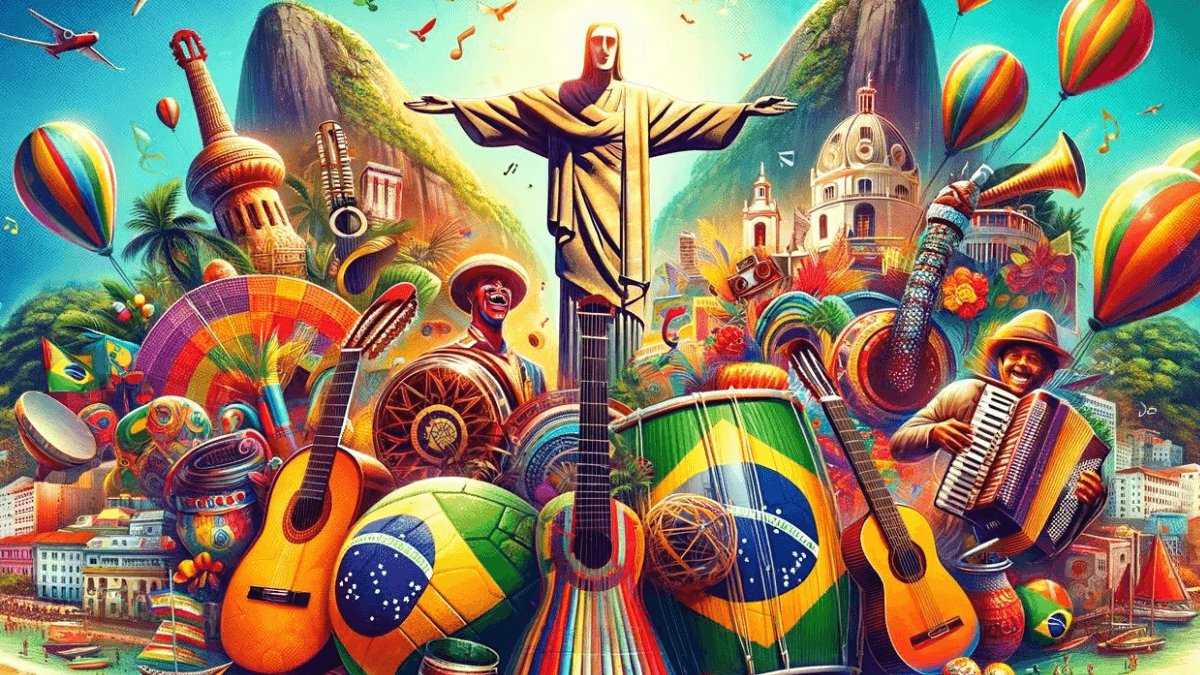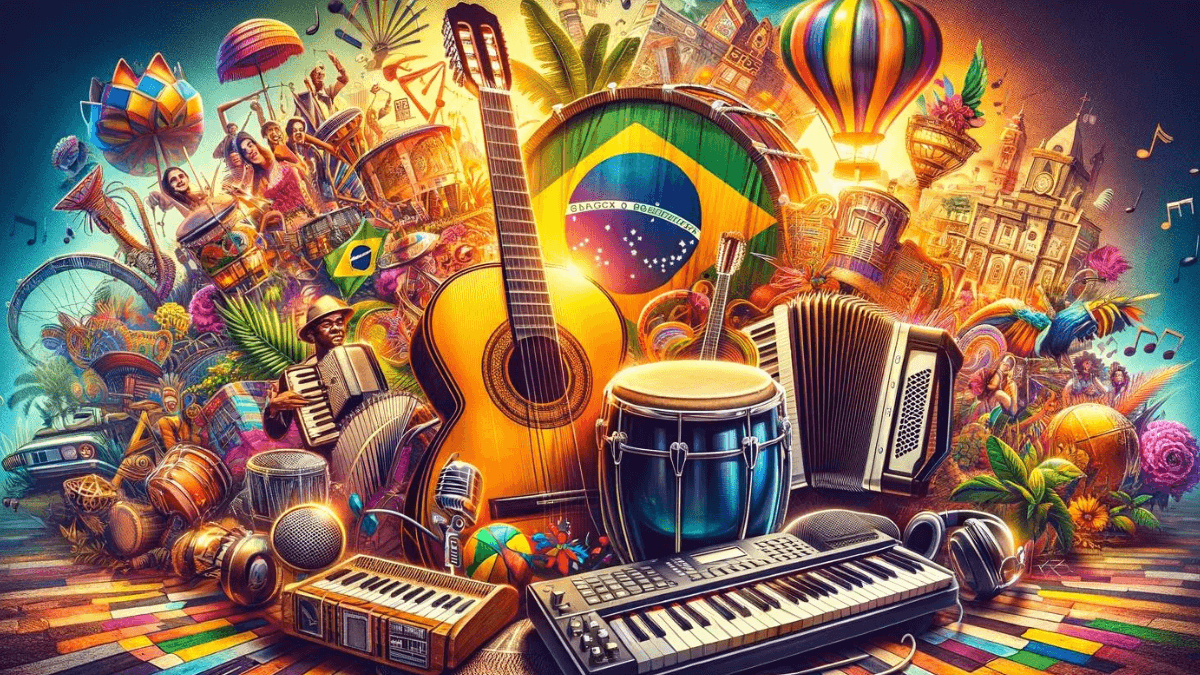- Brazil Carnival is a vibrant tapestry of culture and history;
- It reflects the country’s diverse regions, each with its unique celebrations;
- The rhythm of samba and diverse musical traditions define the festivities;
- Carnival has a significant impact on Brazilian society and the global stage.
Imagine a festival so vast and vibrant that it transforms an entire country into a kaleidoscope of colors, sounds, and movements.
This is Carnival in Brazil, an annual celebration that not only marks the beginning of Lent but also serves as a grand display of the cultural diversity and rich heritage of Brazil.
Across this large nation, each region celebrates Carnival in its unique way, infusing local traditions, music, and dance styles into the festivities.
At the heart of Brazilian Carnival is a deep-rooted history that traces back to European pre-Lent festivities, mixed with African and Indigenous influences brought into the fold over centuries.
This fusion has created a celebration that is not just a party but a vivid expression of Brazil’s complex and varied cultural tapestry.
From the world-famous samba parades of Rio de Janeiro to the electrifying trio elétricos of Salvador and the folkloric traditions of Olinda, Carnival offers a glimpse into the soul of Brazil.
More than just a tourist attraction, Carnival is a time when social barriers dissipate, and a sense of unity pervades. It’s a period where Brazilians from all walks of life come together to celebrate their shared identity and joy of life.
The festival serves as a living museum of Brazilian culture, showcasing everything from traditional music and dance to modern interpretations that keep the spirit of Carnival alive and evolving.
As we explore this extraordinary festival, we dive into a world where joy is king, and the rhythm of life is dictated by the beat of the samba. Vamos lá! (Let’s Go!)
Historical Roots of Carnival in Brazil
Brazil’s Carnival, now a hallmark of its cultural identity, has its roots steeped in ancient European traditions. Originally, Carnival was a Greek spring festival in honor of Dionysus, the god of wine.
The Romans later adopted these revelries, celebrating the Bacchanalia and Saturnalia, indulging in food and drink to honor Bacchus, the Roman god of wine.
With the expansion of the Roman Empire and the spread of Christianity, these pagan festivals were incorporated into Christian traditions.
When Portuguese colonizers arrived in Brazil, they brought with them the tradition of celebrating Carnival, known as ‘Entrudo’ in Portugal, which involved playful water fights and the throwing of food and mud, a practice that was initially met with resistance but gradually integrated into Brazilian culture.
Evolution of Carnival in Brazil
Over time, Brazilian Carnival evolved, influenced by African and Indigenous cultures. African slaves brought to Brazil contributed rhythms, dance styles, and musical instruments, which played a significant role in the development of samba, a genre that later became synonymous with Brazilian Carnival.
By the early 20th century, samba schools were formed in Rio de Janeiro, turning the street celebrations into organized parades. These schools, representing different neighborhoods, competed against each other with elaborately themed parades, vibrant costumes, and rhythmic music.
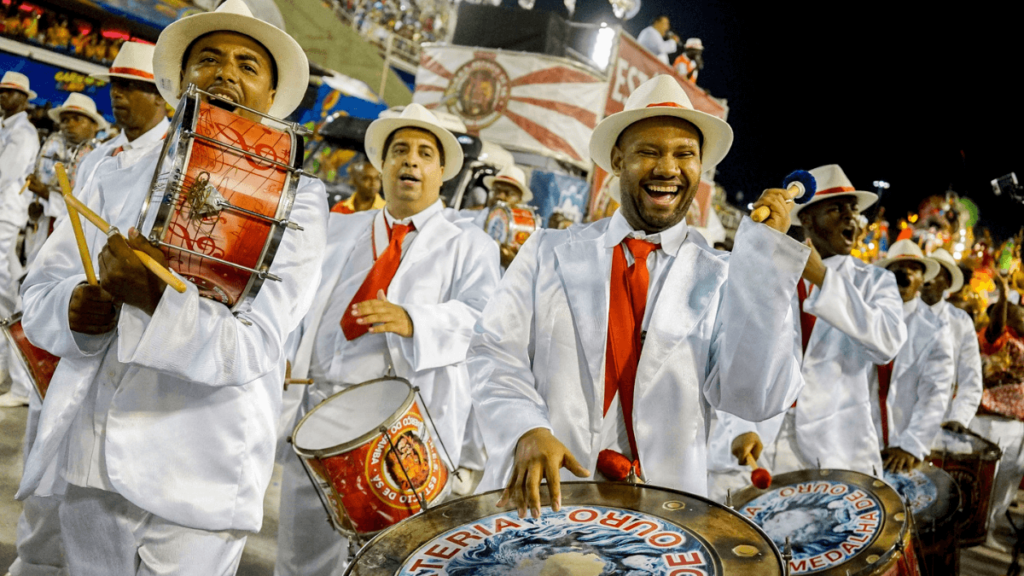
This competition became the heart of Rio’s Carnival and later spread to other cities, each developing its unique style.
The incorporation of Afro-Brazilian traditions, the evolution of samba, and the emergence of samba schools marked a significant turning point in the history of Brazilian Carnival, transforming it into an event that symbolizes the cultural melting pot of Brazil.
Carnival has become a dynamic expression of Brazil’s diverse cultural heritage, continuously evolving while maintaining links to its historical roots.
Plan your trip to Brazil
-
Find the cheapest flights -
Discover the best accommodation -
Explore this incredible country with the best experiences -
Stay connected at all times with an eSIM
Brazil Carnival: the 7 most famous
Here are some details of the 7 cities in Brazil with the most famous carnival programs.
But I must remind you that carnival is a popular festival celebrated all over the country, no matter where you are, even in a small town, there will be something going on during this holiday.
Also See | 20 Songs to Know The Best of Tradicional Brazilian Music
Rio de Janeiro: The Iconic Samba Carnival
Rio de Janeiro’s Carnival is a spectacle of unparalleled grandeur, epitomizing the essence of Brazilian festivity. At its heart are the samba parades, a breathtaking display of music, dance, and artistry.
Samba schools, each representing different neighborhoods, spend months preparing for this event, crafting intricate floats and costumes that narrate stories of Brazilian culture, history, and fantasy.
The Sambódromo, the main venue, becomes an avenue of color and rhythm, as each school competes not just in dance, but in storytelling, drumming, and overall presentation. These parades are judged on various criteria, including theme development, costumes, float design, and samba song quality.
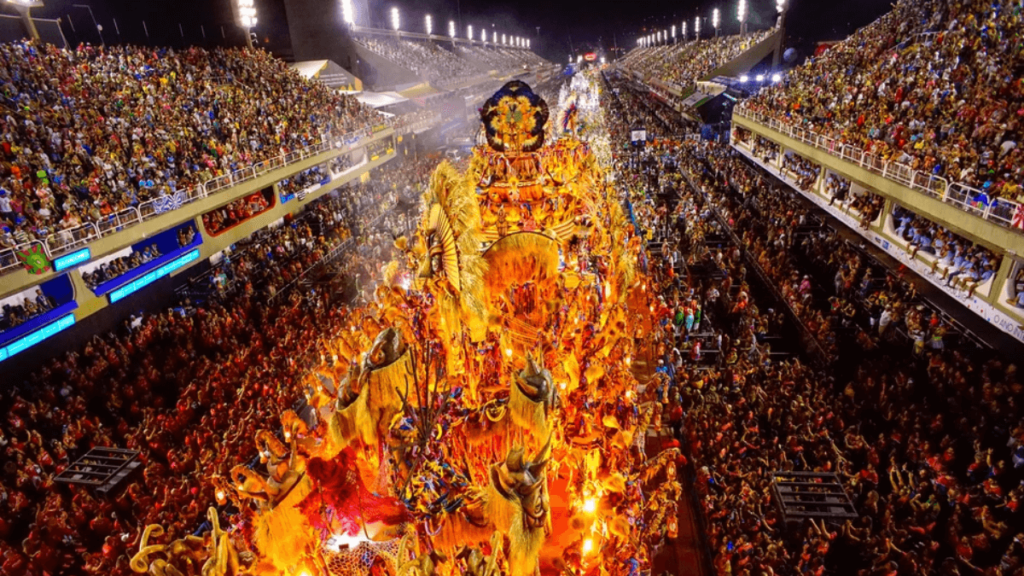
Beyond the competitive parades, Rio’s Carnival is a city-wide celebration. Street parties, known as ‘blocos’, bring the festivity to every corner of the city, where locals and tourists alike dance to the beats of samba, funk, and Brazilian pop.
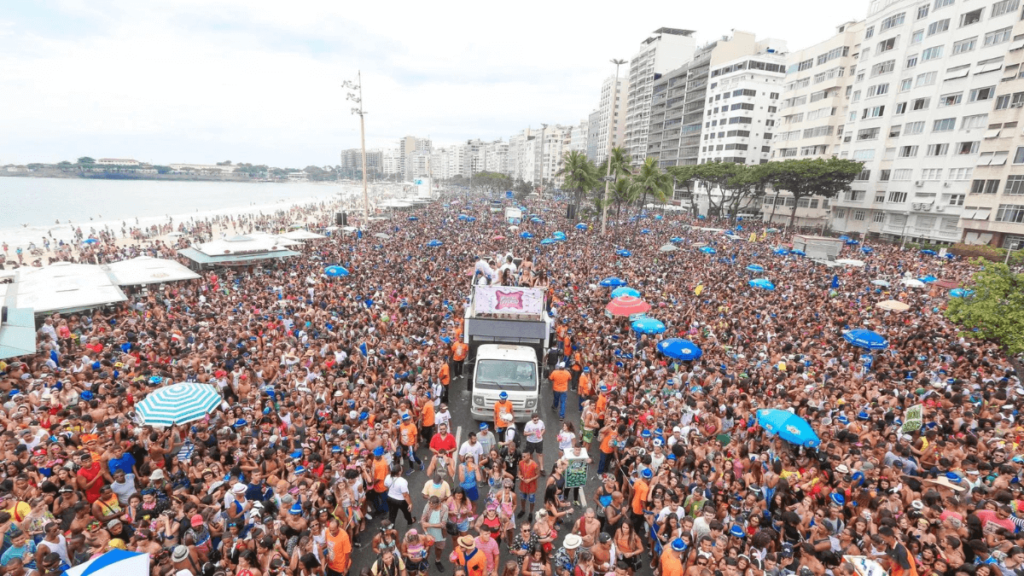
The energy of these street parties contrasts with the organized chaos of the Sambódromo, yet both embody the Carnival’s spirit of joy and unity.
Rio’s Carnival is also a time for showcasing social issues, with many samba schools using their platforms to comment on political, environmental, and social matters, reflecting the voice of the community.
This annual event is not just a tourist attraction; it’s a cultural institution, a living, breathing expression of Rio’s identity, where tradition and modernity dance hand in hand under the Brazilian sky.
São Paulo’s Competitive and Dazzling Parades
São Paulo’s Carnival, while less internationally renowned than Rio’s, is equally spectacular in its own right. It’s characterized by a competitive spirit, where samba schools engage in a fierce contest of music, dance, and storytelling.
The parades are held in the Anhembi Sambadrome, a venue that comes alive with the sound of samba and the sights of lavishly decorated floats and costumes.
Also See | Feijoada: The Most Popular Brazilian Food
The city’s Carnival is known for its grandiose themes, often incorporating elements of Brazilian history, folklore, and current social issues, showcasing not just the schools’ creativity but also their awareness and social consciousness.
São Paulo’s Carnival is a vivid celebration that combines traditional samba with contemporary influences, reflecting the city’s diverse cultural fabric and urban sophistication.
Alongside the official parades at Anhembi Sambadrome, São Paulo features vibrant street parties.
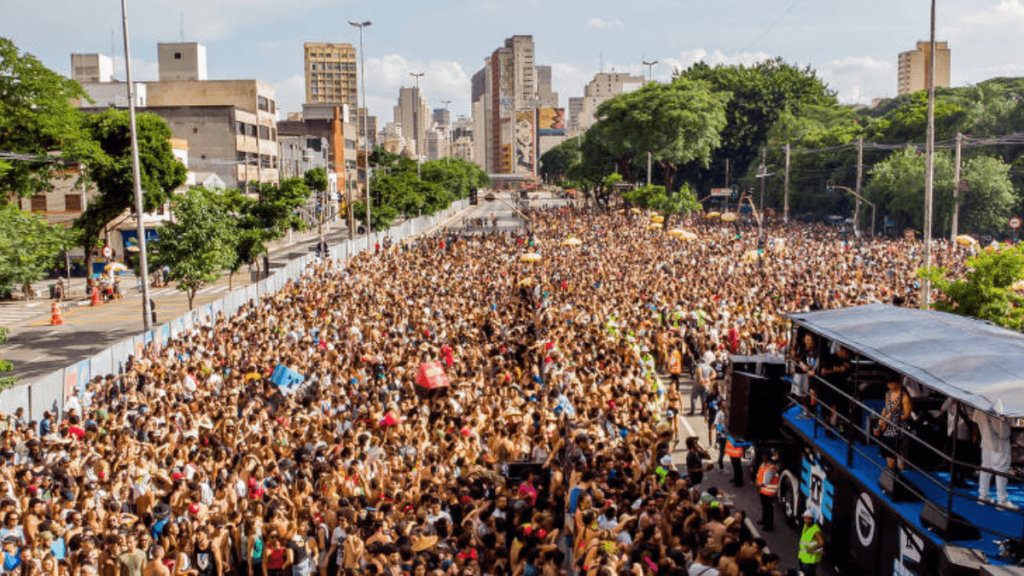
These blocos offer a more casual and diverse Carnival experience, attracting crowds with different Brazilian music genres ranging from traditional samba to modern pop.
The city’s diverse neighborhoods come alive, each hosting their unique celebrations, reflecting São Paulo’s cultural diversity and cosmopolitan spirit.
This mix of formal parades and street festivities encapsulates the dynamic and inclusive nature of São Paulo’s Carnival, making it a comprehensive celebration of Brazilian joy and culture.
Salvador and the Magic of Trio Elétricos
Salvador’s Carnival is a jubilant expression of Afro-Brazilian culture, renowned for its high-energy and inclusive street parties.
The city comes alive with the sound of axé music, a rhythm that combines African beats with Brazilian pop, rock, and reggae. The heart of this celebration is the “Trio Elétricos,” mobile stages that parade through the streets with live bands performing on top.
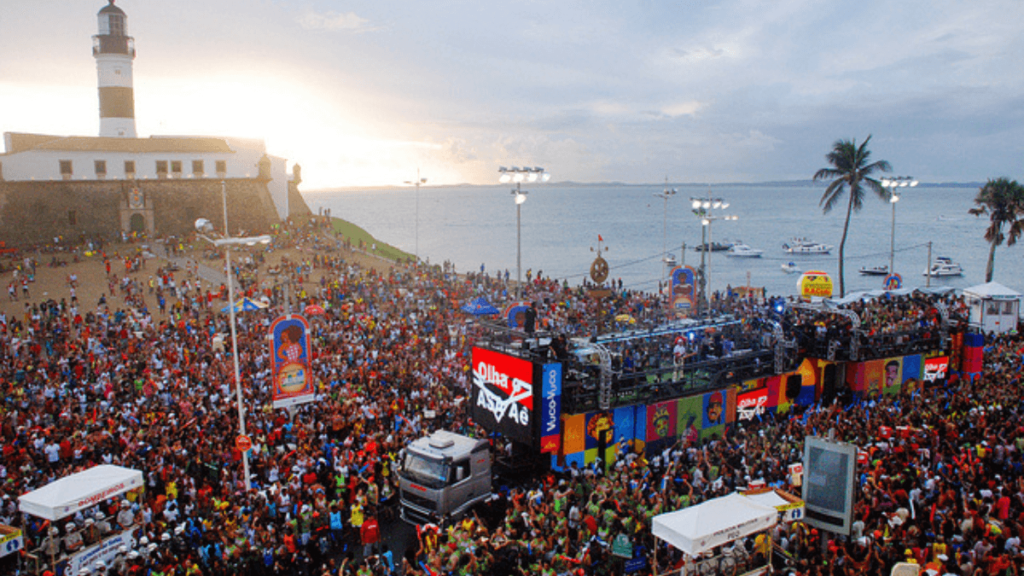
Unlike the structured parades of Rio, Salvador’s Carnival is characterized by its spontaneity and interactivity. Crowds of dancers follow the trios, creating a dynamic and immersive experience.
What it’s like to be around a “Trio Elétrico” at the Salvador carnival:
These street parties, known as “blocos,” are where locals and visitors alike can join in the festivities, dancing and celebrating in the open air.
Salvador’s Carnival is not just a party; it’s a showcase of cultural pride and heritage. It embraces the spirit of community and celebrates the diverse influences that shape Brazilian culture.
From traditional African dances to contemporary Brazilian music, Salvador’s Carnival is a vibrant testament to Brazil’s rich cultural mosaic.
Olinda’s Historic and Folkloric Carnival
Olinda’s Carnival stands out with its unique blend of traditional charm and vibrant energy. Famous for its “Bonecos de Olinda,” enormous, whimsical puppets that parade through the ancient streets, the festival is a blend of the historical and the contemporary.
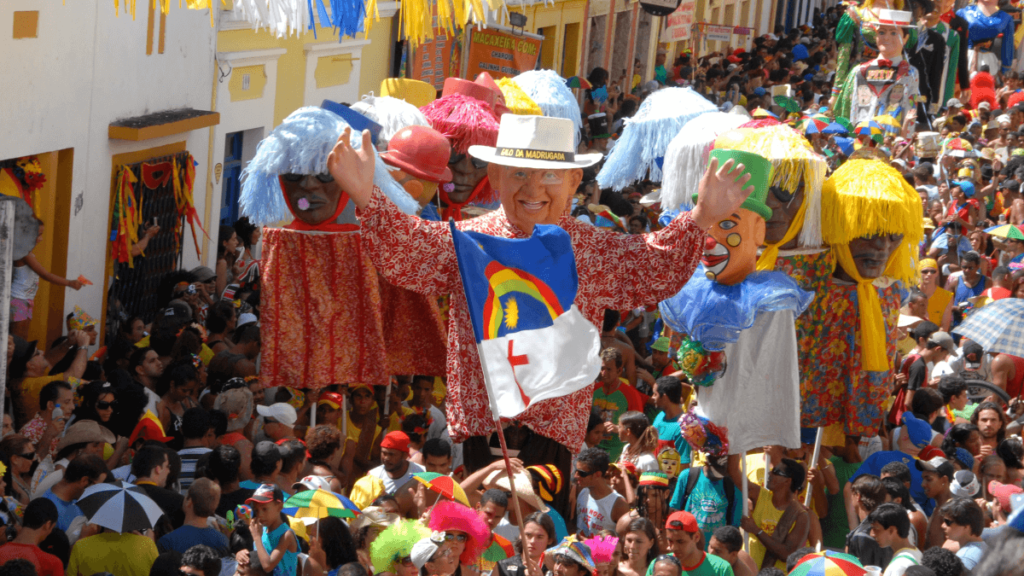
The cobblestone streets and colorful colonial buildings form a picturesque backdrop to the celebrations.
Frevo, a frenetic and joyous dance unique to Pernambuco, is the soul of Olinda’s Carnival. Dancers, often carrying small umbrellas, perform acrobatic moves to the fast-paced music, invigorating the atmosphere.
The festival is a true community event, where local residents and visitors become part of a collective celebration of culture and history.
Unlike more commercialized Carnivals, Olinda’s version remains deeply rooted in local traditions, offering an authentic and immersive experience into Brazilian festivity.
Ouro Preto’s Youthful and Historical Festivities
Ouro Preto’s Carnival is distinctively characterized by its youthful energy and historic setting. This charming colonial town, known for its baroque architecture, becomes a hub for students and young people during Carnival.
The celebrations here are famous for their informal and vibrant street parties, organized by local university students.
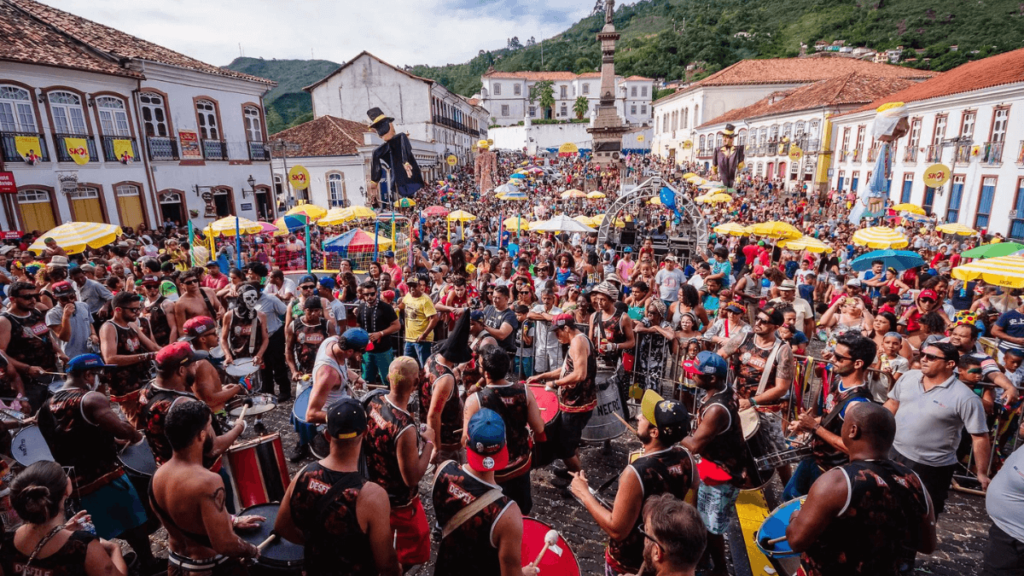
These parties, known as “repúblicas,” are informal, often themed, and showcase a blend of traditional Brazilian music and contemporary genres.
Ouro Preto’s Carnival offers a more laid-back, yet lively atmosphere, making it a unique and appealing destination for those looking to experience a different side of Brazil’s festive traditions.
Belo Horizonte’s Community Spirit and Street Carnivals
Belo Horizonte’s Carnival is a testament to the city’s strong sense of community and inclusivity. Unlike the more famous Carnivals of Rio and Salvador, Belo Horizonte’s celebration is known for its emphasis on local culture and community participation.
The city streets come alive with an array of “blocos” that are more intimate and focused on local music and traditional Brazilian rhythms.
This approach to Carnival fosters a sense of camaraderie and grassroots involvement, making it a unique and authentic experience that highlights the communal spirit of Brazil’s cultural celebrations.
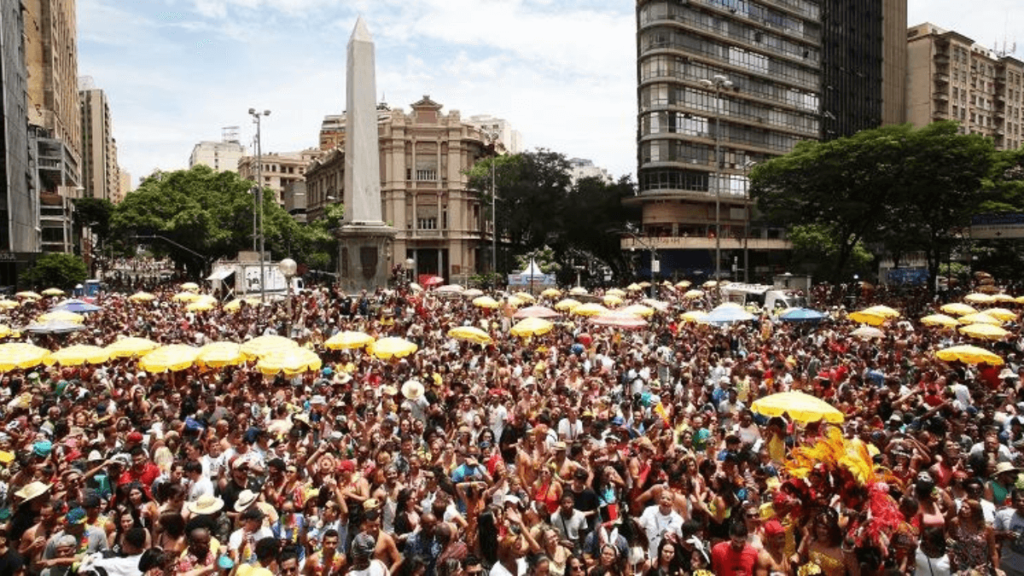
Paraty’s Historical and Cultural Fusion with Bloco da Lama
Paraty’s Carnival blends history and culture in an intriguing way, particularly renowned for its unique “Bloco da Lama” (Mud Block).
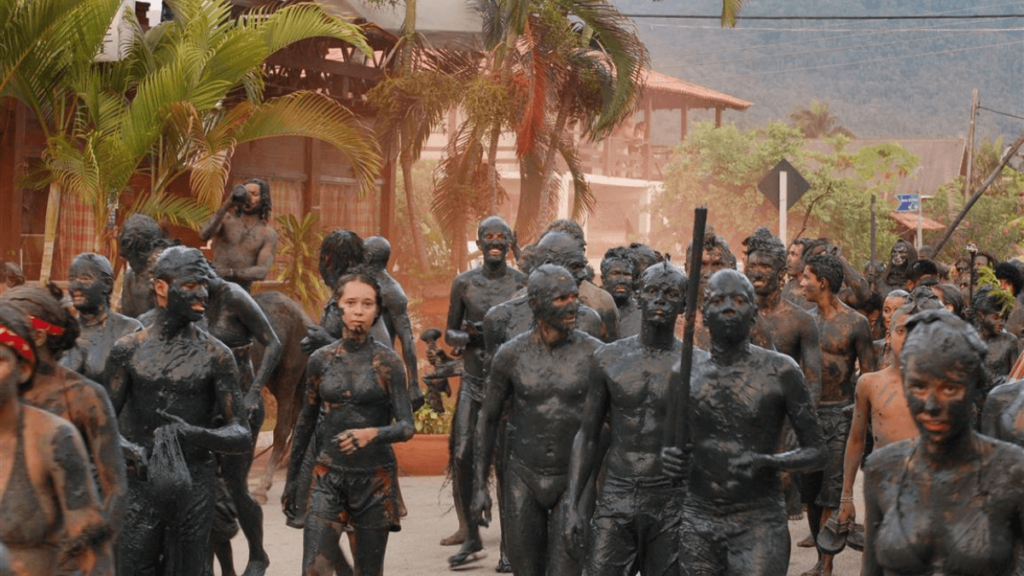
This quirky tradition, where participants cover themselves in mud as if they were ancient tribes, adds a playful and primal element to the festivities.
The mud-covered revelers parade through the town’s historic streets, creating a stark yet fascinating contrast with the preserved colonial architecture.
This element, combined with traditional masks and historical reenactments, makes Paraty’s Carnival an eclectic and memorable experience.
The Bloco da Lama is more than just fun; it’s a symbol of Carnival’s ability to blur the lines between the past and the present, tradition and innovation.
The Rhythms and Dance of Brazilian Carnival
Immerse yourself in the infectious rhythms and dances that are the lifeblood of Brazilian Carnival, celebrating the nation’s musical diversity and the iconic samba.
Samba – The Heartbeat of Brazilian Celebrations
Samba, the rhythm that pulsates through Brazilian Carnival, has its origins in the African rhythms and dance forms brought by slaves.
It evolved in Brazil, particularly in Rio de Janeiro, blending with local influences to become a symbol of Brazilian identity. Samba’s evolution is deeply intertwined with Brazil’s social and cultural history. Initially, it was a form of resistance and expression for the marginalized.
Over time, it gained national prominence, especially with the establishment of samba schools, becoming the backbone of Carnival parades. Today, samba is not just a dance or a musical genre; it’s an expression of joy, resilience, and the unifying spirit of Brazil.
Diverse Musical Traditions in Brazilian Carnival
While samba reigns supreme in many parts of Brazil during Carnival, the festival is a melting pot of musical styles, reflecting the country’s diverse cultural heritage.
In Salvador, axé music, a blend of Afro-Brazilian rhythms, rock, pop, and reggae, dominates the streets with its high-energy beats. In Pernambuco, frevo’s fast-paced and acrobatic dance style captures the essence of Carnival in Recife and Olinda.
Maracatu, another traditional rhythm from the Northeast, combines elements of African, Indigenous, and European cultures. Each region of Brazil brings its unique sound to Carnival, creating a rich and varied musical tapestry that is as vibrant and dynamic as the country itself.
Carnival’s Impact on Brazilian Society and Beyond
Understand the profound impact of Carnival on Brazilian society and its global significance, examining its economic, social, and cultural influences and envisioning its future.
Economic, Social, and Global Significance
Brazilian Carnival is more than just a cultural spectacle; it’s a significant economic driver, attracting millions of tourists and generating substantial revenue.
Cities like Rio and Salvador see a massive influx of international and domestic visitors, boosting local businesses, from hotels to restaurants.
Beyond its economic impact, Carnival plays a vital role in fostering social cohesion. It’s a time when people from diverse backgrounds come together, breaking down social barriers and celebrating their shared humanity.
Globally, Carnival has put Brazil on the map, not just as a tourist destination but as a cultural powerhouse, influencing music, dance, and festivals worldwide.
The Future of Brazilian Carnival
As Brazilian Carnival looks to the future, sustainability, innovation, and the preservation of tradition become focal points.
With growing environmental concerns, many Carnival groups are adopting eco-friendly practices, from using sustainable materials in costumes and floats to promoting waste reduction.
Technological advancements are also shaping Carnival, with the integration of new media and digital experiences offering new ways to engage audiences.
However, amidst these changes, there is a strong emphasis on preserving the historical and cultural roots of Carnival, ensuring that its evolution does not erase its rich traditions. This balance between innovation and tradition is what will continue to make Brazilian Carnival a dynamic and enduring celebration.
Carnival Reflections: Celebrating Brazil’s Heart and Soul
As we conclude our exploration of Brazilian Carnival, it’s clear that this festivity is much more than an annual event; it’s a vibrant expression of Brazil’s diverse cultural heritage.
From the pulsating rhythms of samba in Rio to the folkloric traditions of Olinda, each city adds its unique hue to the Carnival’s colorful tapestry.
This celebration is not just a display of Brazil’s artistic creativity, but also a critical economic and social catalyst, uniting people from all walks of life.
As Carnival continues to evolve, embracing both sustainability and innovation, it holds onto its rich traditions, ensuring that this spectacular festival remains a cherished symbol of Brazil’s identity and spirit, resonating far beyond its borders.
Did you like our content, do you want to get to know our country?! Discover the best experiences to live in Brazil!
